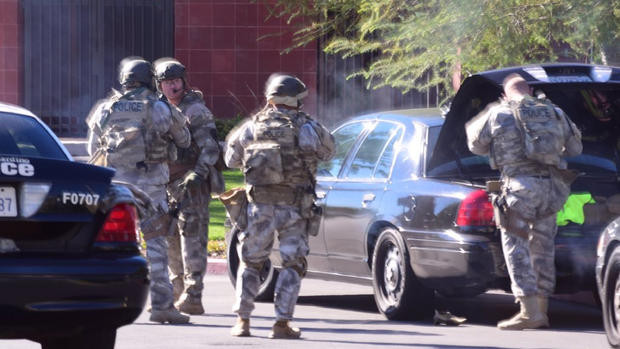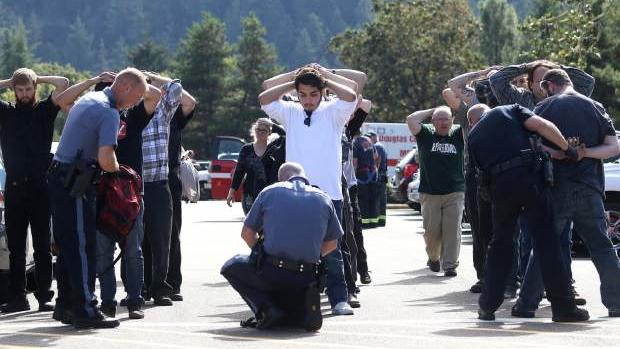What's the best way to react in active shooter situation?
Law enforcement has been re-evaluating active shooter protocols since the 1999 shooting at Columbine High School in Colorado, where two shooters killed 13 people, CBS News' Kris Van Cleave reports.
As active shooter drills become more common, police say the best way for non-law enforcement individuals to respond in these situations is to evacuate, hide out, or, in some cases, take action.
Dorothy Vong, an Inland Regional Center nurse, thought the heavily armed police storming the San Bernardino building were part of a drill. She told the LA Times that the San Bernardino facility practices active shooter situations "every month or so." Instead, the deadly attack by suspects Syed Rizwan Farook and his wife, Tashfeen Malik, killed 14 people.
The frequency of active shooter incidents in the U.S. is rising, and police are adjusting their tactics.
"First responding patrol officers are expected to ... go in and find that threat and stop the killing," former FBI assistant director Ron Hosko said. "They are not waiting for a SWAT team that may be 15 minutes or an hour behind."
Between 2000 and 2013, the FBI reported there were 160 active shooter incidents in the U.S. Forty-five of them were between 2000 and 2006, but over the next seven years, that number more than doubled to 115. Sixty percent of the shootings ended before officers arrived.
Less than two weeks ago, the New York City Police Department held a three-hour active shooter drill in the city's subway system.
"These exercises are vitally necessary, particularly in light of all that's going on in the world at this particular point in time," NYPD Commissioner Bill Bratton said at the time.
In January, the Los Angeles County Sheriff's Department posted a video online with guidelines on how to survive a shooting of this kind.
Similar videos have been posted by other police departments and universities throughout the country.
The Ohio State University video advised people to lock or barricade the doors and avoid huddling together.
According to the Department of Homeland Security, active shooter incidents typically last between 10 and 15 minutes.
"I always say if you can get out, getting out is your first option, your best option," Washington, D.C., Police Chief Cathy Lanier told Anderson Cooper during a "60 Minutes" interview broadcast last month. "If you're in a position to try and take the gunman down, to take the gunman out, it's the best option for saving lives before police can get there. And that's kind of counterintuitive, what cops always tell people right? We always tell people don't, you know, don't take action, call 911. Don't intervene in the robbery. We've never told people, take action. It's a different--this is a different scenario."
"You're telling them that now though," Cooper said.
"We are," she said.
Police also advise people to be aware of their surroundings and to locate the two nearest exits in case they need to get out fast.

